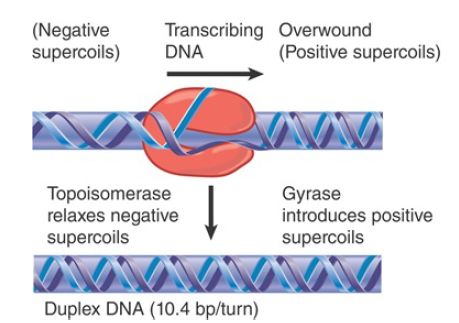

النبات

مواضيع عامة في علم النبات

الجذور - السيقان - الأوراق

النباتات الوعائية واللاوعائية

البذور (مغطاة البذور - عاريات البذور)

الطحالب

النباتات الطبية


الحيوان

مواضيع عامة في علم الحيوان

علم التشريح

التنوع الإحيائي

البايلوجيا الخلوية


الأحياء المجهرية

البكتيريا

الفطريات

الطفيليات

الفايروسات


علم الأمراض

الاورام

الامراض الوراثية

الامراض المناعية

الامراض المدارية

اضطرابات الدورة الدموية

مواضيع عامة في علم الامراض

الحشرات


التقانة الإحيائية

مواضيع عامة في التقانة الإحيائية


التقنية الحيوية المكروبية

التقنية الحيوية والميكروبات

الفعاليات الحيوية

وراثة الاحياء المجهرية

تصنيف الاحياء المجهرية

الاحياء المجهرية في الطبيعة

أيض الاجهاد

التقنية الحيوية والبيئة

التقنية الحيوية والطب

التقنية الحيوية والزراعة

التقنية الحيوية والصناعة

التقنية الحيوية والطاقة

البحار والطحالب الصغيرة

عزل البروتين

هندسة الجينات


التقنية الحياتية النانوية

مفاهيم التقنية الحيوية النانوية

التراكيب النانوية والمجاهر المستخدمة في رؤيتها

تصنيع وتخليق المواد النانوية

تطبيقات التقنية النانوية والحيوية النانوية

الرقائق والمتحسسات الحيوية

المصفوفات المجهرية وحاسوب الدنا

اللقاحات

البيئة والتلوث


علم الأجنة

اعضاء التكاثر وتشكل الاعراس

الاخصاب

التشطر

العصيبة وتشكل الجسيدات

تشكل اللواحق الجنينية

تكون المعيدة وظهور الطبقات الجنينية

مقدمة لعلم الاجنة


الأحياء الجزيئي

مواضيع عامة في الاحياء الجزيئي


علم وظائف الأعضاء


الغدد

مواضيع عامة في الغدد

الغدد الصم و هرموناتها

الجسم تحت السريري

الغدة النخامية

الغدة الكظرية

الغدة التناسلية

الغدة الدرقية والجار الدرقية

الغدة البنكرياسية

الغدة الصنوبرية

مواضيع عامة في علم وظائف الاعضاء

الخلية الحيوانية

الجهاز العصبي

أعضاء الحس

الجهاز العضلي

السوائل الجسمية

الجهاز الدوري والليمف

الجهاز التنفسي

الجهاز الهضمي

الجهاز البولي


المضادات الميكروبية

مواضيع عامة في المضادات الميكروبية

مضادات البكتيريا

مضادات الفطريات

مضادات الطفيليات

مضادات الفايروسات

علم الخلية

الوراثة

الأحياء العامة

المناعة

التحليلات المرضية

الكيمياء الحيوية

مواضيع متنوعة أخرى

الانزيمات
Supercoiling Is an Important Feature of Transcription
المؤلف:
JOCELYN E. KREBS, ELLIOTT S. GOLDSTEIN and STEPHEN T. KILPATRICK
المصدر:
LEWIN’S GENES XII
الجزء والصفحة:
5-5-2021
2247
Supercoiling Is an Important Feature of Transcription
KEY CONCEPTS
- Negative supercoiling increases the efficiency of some promoters by assisting the melting reaction.
- Transcription generates positive supercoils ahead of the enzyme and negative supercoils behind it, and these must be removed by gyrase and topoisomerase.
Both prokaryotic and eukaryotic RNA polymerases usually seem to initiate transcription more efficiently in vitro when the template is supercoiled, and in some cases promoter efficiency is aided tremendously by negative supercoiling. Why are different promoters influenced more by the extent of supercoiling than others? The most likely possibility is that the dependence of a promoter on supercoiling is determined by the free energy needed to melt the DNA in the initiation complex. The free energy of melting, in turn, is dependent on the DNA sequence of the promoter. The more G+C rich the promoter sequence corresponding to the position of the transcription bubble, the more dependent the promoter would be on supercoiling to help melt the DNA.
However, whether a particular promoter’s activity is facilitated by supercoiling is much more complicated. The dependence of different promoters on the degree of supercoiling is also affected by DNA sequences outside of the bubble, because supercoiling changes the geometry of the complex, affecting the angles and distances between bases in space. Therefore, differences in the degree of supercoiling can alter interactions between bases in the promoter and amino acids in RNA polymerase. Furthermore, because different parts of the chromosome exhibit different degrees of supercoiling, the effect of supercoiling on a promoter’s activity can be influenced by the location of the promoter on the chromosome.
As RNA polymerase continually unwinds and rewinds the DNA as it moves down the template , either the entire transcription complex must rotate around the DNA or the DNA itself must rotate about its helical axis. It is thought that the latter situation is closer to reality: The DNA threads through the enzyme like a screw through a bolt.
One consequence of the rotation of DNA is illustrated in FIGURE 1. In the twin domain model for transcription, as RNA polymerase moves with respect to the double helix it generates positive supercoils (more tightly wound DNA) ahead of it and leaves negative supercoils (partially unwound DNA) behind it. For each helical turn traversed by RNA polymerase, +1 turn is generated ahead and −1 turn behind. Transcription therefore not only is affected by the local structure of DNA but also affects the actual structure of the DNA. The enzymes DNA gyrase, which introduces negative supercoils into DNA, and DNA topoisomerase I, whichremoves negative su percoils in DNA, are required to prevent topological stresses from building up in the course of transcription and replication. Blocking the activities of gyrase and topoisomerase therefore results in major changes in DNA supercoiling, which, in turn, affect transcription and replication. This was discussed earlier in the context of replication .

FIGURE 1. Transcription generates more tightly wound (positively supercoiled) DNA ahead of RNA polymerase, while the DNA behind becomes less tightly wound (negatively supercoiled).
 الاكثر قراءة في مواضيع عامة في الاحياء الجزيئي
الاكثر قراءة في مواضيع عامة في الاحياء الجزيئي
 اخر الاخبار
اخر الاخبار
اخبار العتبة العباسية المقدسة

الآخبار الصحية















 قسم الشؤون الفكرية يصدر كتاباً يوثق تاريخ السدانة في العتبة العباسية المقدسة
قسم الشؤون الفكرية يصدر كتاباً يوثق تاريخ السدانة في العتبة العباسية المقدسة "المهمة".. إصدار قصصي يوثّق القصص الفائزة في مسابقة فتوى الدفاع المقدسة للقصة القصيرة
"المهمة".. إصدار قصصي يوثّق القصص الفائزة في مسابقة فتوى الدفاع المقدسة للقصة القصيرة (نوافذ).. إصدار أدبي يوثق القصص الفائزة في مسابقة الإمام العسكري (عليه السلام)
(نوافذ).. إصدار أدبي يوثق القصص الفائزة في مسابقة الإمام العسكري (عليه السلام)


















